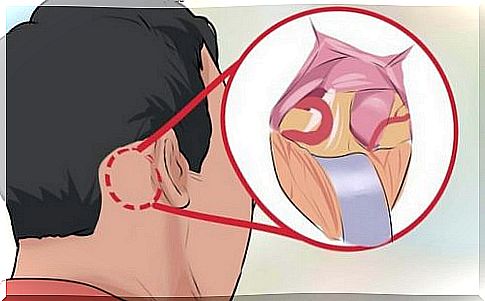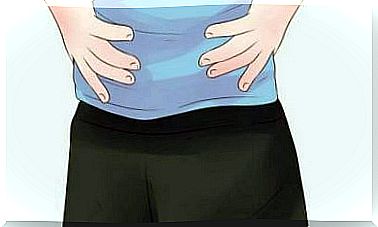5 Keys To Trigeminal Neuralgia: The Worst Pain In The World

There are many pains, and without a doubt each one of them is unique in its intensity and characteristics. However, it is common to describe trigeminal neuralgia as the worst pain in the world.
In our head there are 12 pairs of nerves, and one of them can cause this kind of disabling neuralgia in a part of the population. As a matter of fact, there are data of its existence from antiquity, when Areteu da Cappadocia, a physician from the second century, described it for the first time.
It is a painful tic, like an electrical charge that radiates from the facial area from the cheekbone to the chin.
It is always helpful to know about this type of medical condition, so today, in our space, we want to explain five main points about trigeminal neuralgia.
1. What is trigeminal neuralgia
- Trigeminal neuralgia is a type of chronic pain that affects a specific nerve, which gives it its name. We are talking about the fifth cranial nerve, one of the longest in the head.
- Trigeminal neuralgia appears in the form of “ticks” of strong intensity. These are short intervals, between two seconds and one minute, in which the person is paralyzed, unable to chew or even speak because of the pain.
- It lasts a short time, but in some cases trigeminal neuralgia can progress and last longer and longer.
- This nerve, in turn, has three branches that cross the visual area, the scalp, forehead, and the front of the head.
- This explains why people experience pain in the jaw, cheek, lips, teeth and even gums.
The culprit is a blood vessel
- The origin of this neuralgia is in a blood vessel, because it compresses the trigeminal nerve as it leaves the brainstem.
- The sheath around the nerve wears away, either from the passage of time or from a disease that deteriorates the nerve’s myelin.
- This progressive nerve wear causes it to send abnormal signals to the brain.
It is the most intense headache we can experience.
2. What are the symptoms?
- The episodes start sharply and briefly, mimicking an “electrical discharge”. The person may be surprised not to know what happened to him, however, he doesn’t give importance to the fact because of its speed.
- Little by little the attacks are repeated. Just touch your face, chew, talk or brush your teeth for the “discharge” to occur again.
- Pain attacks last between a few seconds and several minutes.
- Episodes can last for days and then disappear. However, they come back in about a month, or they last for several months at a time.
- The pain, as we’ve already mentioned, radiates to the cheeks, jaw, teeth, gums, lips or, less frequently, to the eyes or forehead.
- Pain usually only affects one side of the face.
- Attacks become more frequent and intense over time.
3. Who is usually affected by trigeminal neuralgia?

- Trigeminal neuralgia especially affects people over 50 years of age. However, it is noteworthy that it can also occur in young people.
- The disorder is more common in women than in men.
- It used to be something hereditary.
4. What tests should I take?
The medical diagnosis of trigeminal neuralgia is based on three fundamental points that allow it to be differentiated, for example, from a migraine:
- Type of pain: if it’s brief, we’re talking neuralgia.
- Location: Knowing the parts of the face that are affected by pain is essential for diagnosing it.
- Triggers: This type of neuralgia is related to light stimulation in the cheeks, chewing and speaking.
Once we have communicated these points to the doctor, the specialist can order the following tests:
- A neurological exam.
- An MRI.
5. How to treat trigeminal neuralgia?

Pharmacological treatment
Our doctors will always be in charge of recommending the best treatment. It should be said that with this type of neuralgia, simple anti-inflammatory or analgesics do not work.
- Anticonvulsants are used to block the nerve firing of this brain structure.
- Furthermore, the use of tricyclic antidepressants is effective when pain is constant.
surgical approach
If the drugs don’t work, we would move on to a neurosurgical procedure.
The techniques can range from simple interventions to more complex operations, and would be as follows:
- A rhizotomy is a procedure in which certain nerve fibers are destroyed to block pain.
- The flask compression is a simple and fast technique. A cannula is inserted through which a small balloon passes, which is intended to compress the trigeminal nerve to reduce its stimulation and pain.
- The glycerol injection is another technique for isolating the trigeminal nerve fibers and thus prevent electrical discharges such as painful.
Finally, if the above strategies do not work, what is known as microvascular decompression is performed. It is a more delicate intervention, but at the same time, more effective. Thanks to her, this type of neuralgia does not reappear.
To conclude, what is known as the “worst pain in the world” has a solution. It’s just about being patient, following the advice of our doctors, and going through different techniques until you find the one that offers us the best quality of life.
Were the guidelines helpful to you? So, read the next articles with more tips for your health and well-being.
Main image courtesy of wikiHow.com









